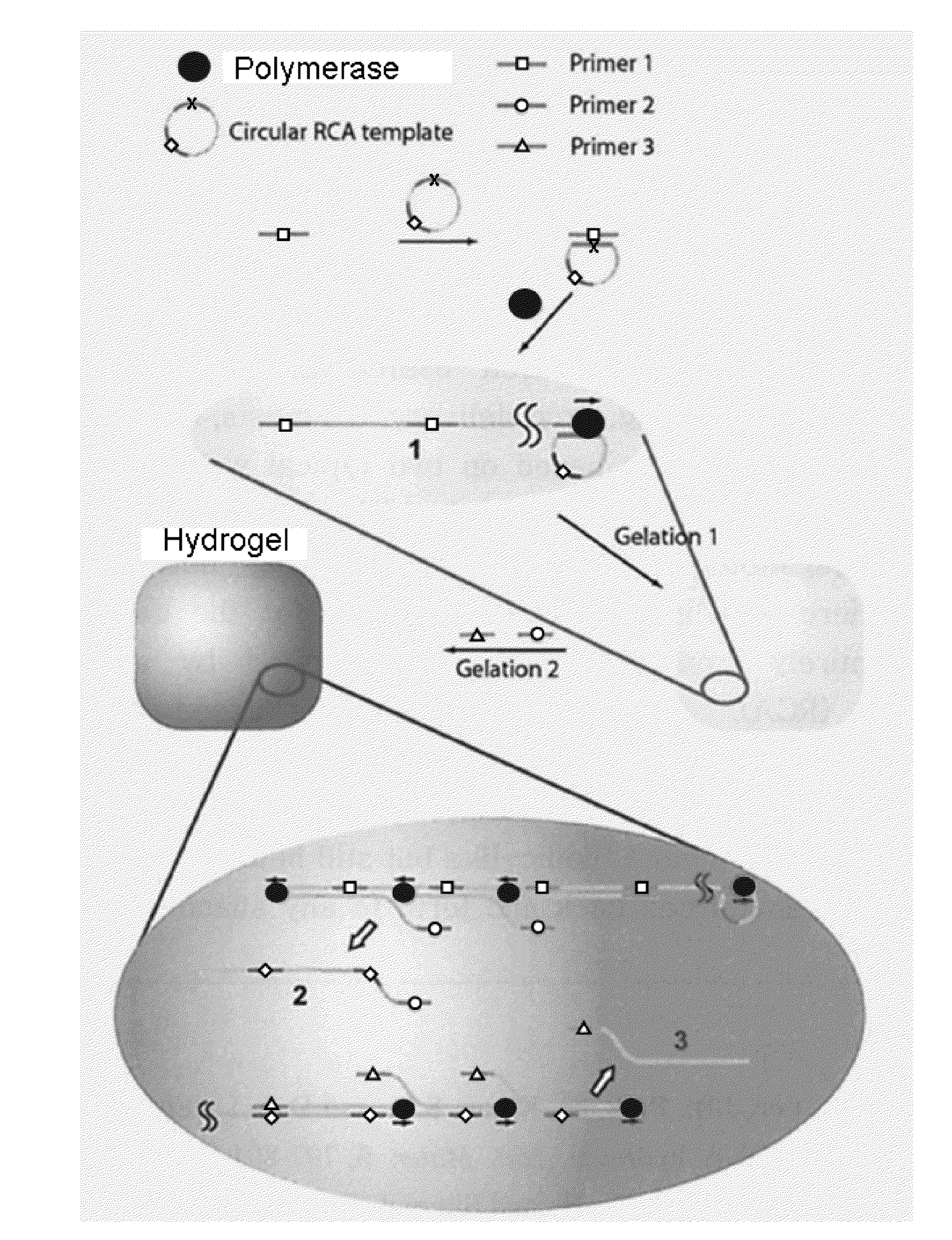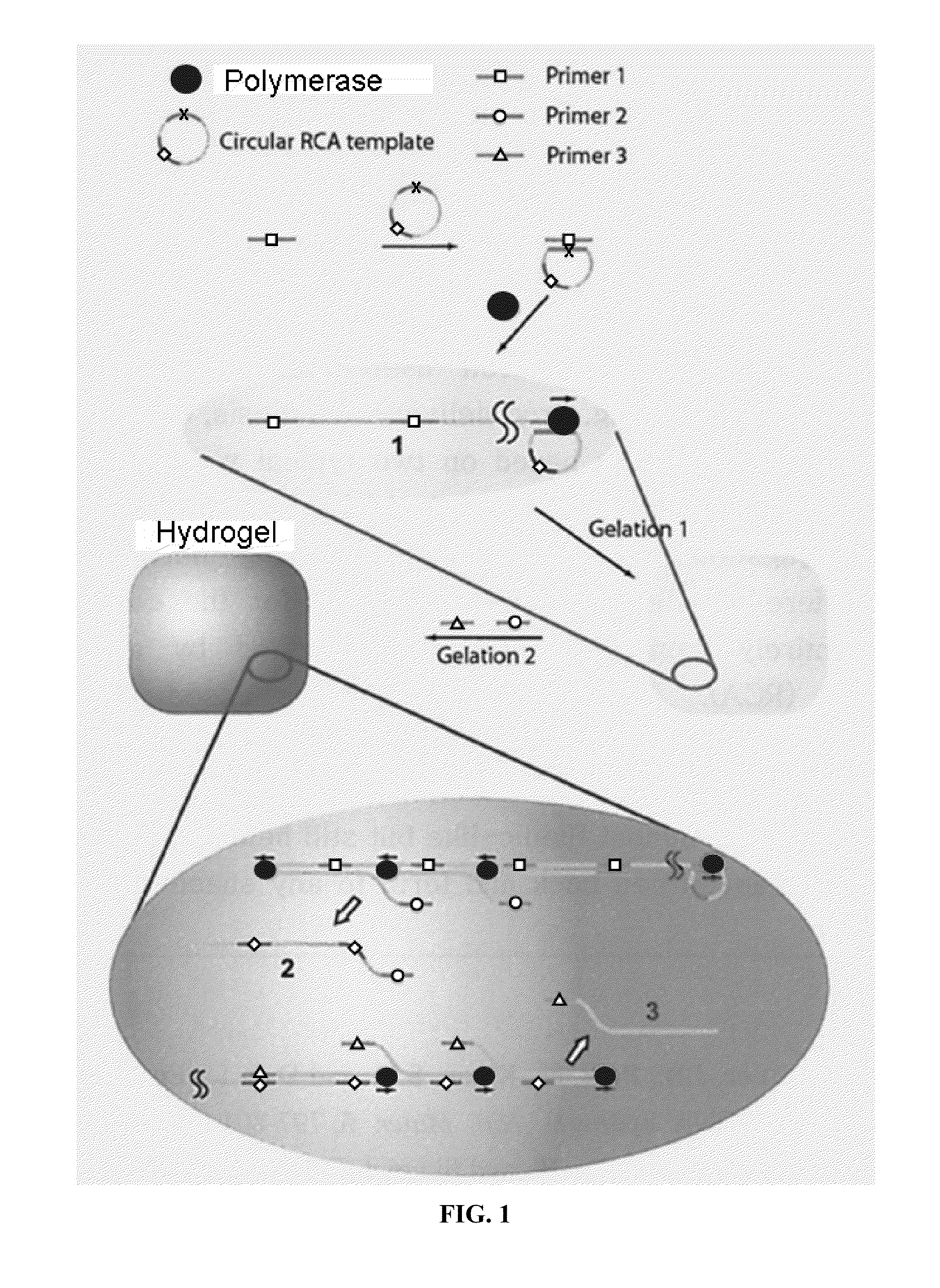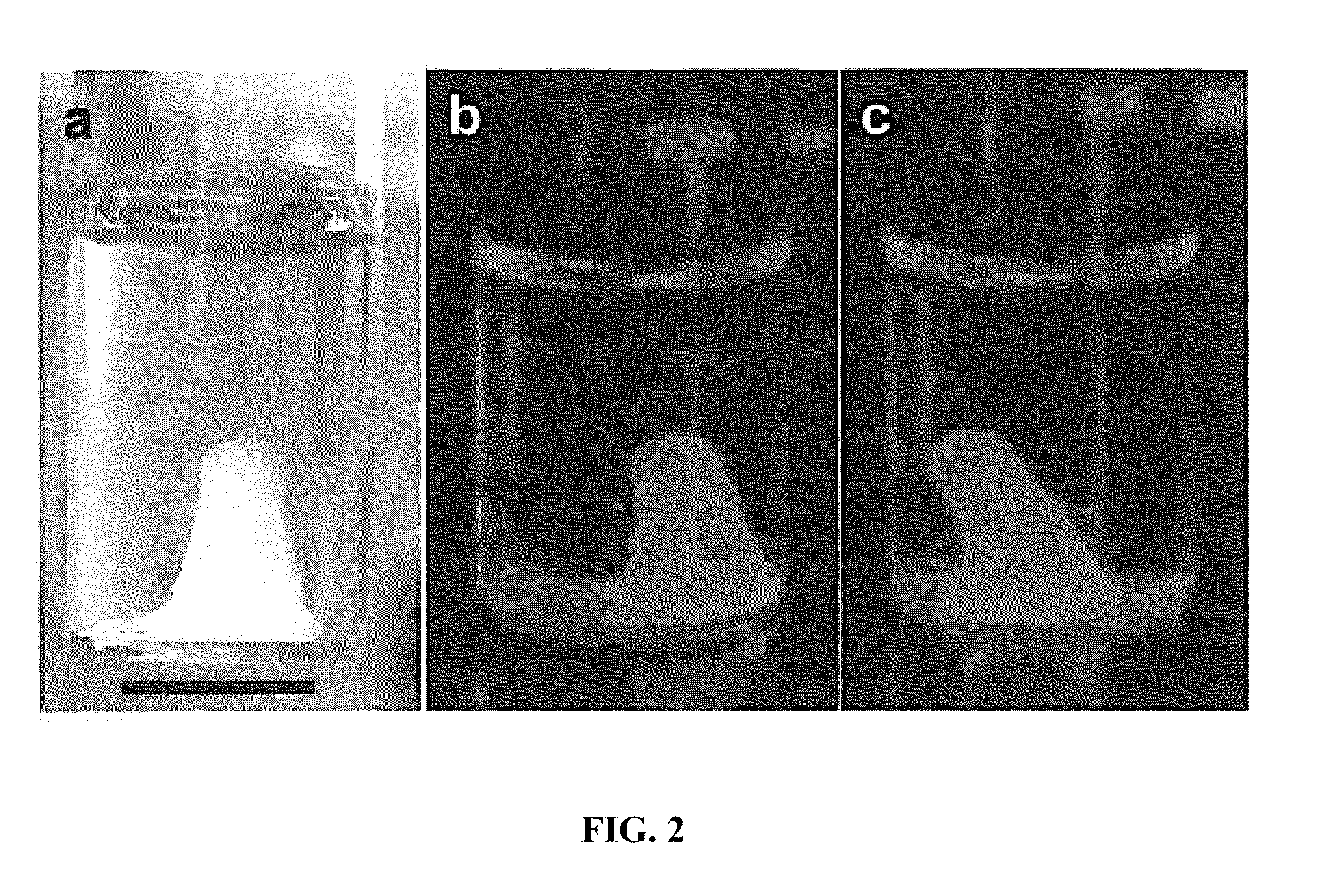Nucleic acid hydrogel via rolling circle amplification
a technology of nucleic acid hydrogel and rolling circle, which is applied in the direction of capsule delivery, pharmaceutical delivery mechanism, pharmaceutical product form change, etc., can solve problems such as complex processes
- Summary
- Abstract
- Description
- Claims
- Application Information
AI Technical Summary
Benefits of technology
Problems solved by technology
Method used
Image
Examples
example 1
Chemicals and DNA Sequences
[0158]Enzymes were purchased from New England Biolabs, Beverly, Mass. Oligonucleotides were commercially synthesized and PAGE purified (Integrated DNA Technologies, Coralville, Iowa). Sequences of the oligonucleotides are:
Circular Template (SEQ ID NO. 1):5′-Phosphate-TCGTTTGATGTTCCTAACGTACCAACGCACACGCAGTATTATGGACTGGTAAAAGCTTTCCGAGGTAGCCTGGAGCATAGAGGCATTGGCTGPrimer 1 (SEQ ID NO. 2):5′-CAGTCCATAATACTGCGT(complementary to circular template)Primer 2 (SEQ ID NO. 3):5′-ACGCAGTATTATGGACTGPrimer 3 (SEQ ID NO. 4):5′-TGGTACGTTAGGAACATC(complementary to circular template)
Preparation of Circular Templates:
[0159]Two hundred microliter of ligation reaction mixture (0.5 μM of ssDNA linear template, 50 μM of ATP, 2.5 mM of MnCl2, 5 unit / μL of CircLigase ssDNA Ligase in a reaction buffer provided) was incubated overnight at 65° C. This solution was heated up at 80° C. for 10 minutes (“min”) to inactivate the CircLigase then gradually cooling down to 4° C. To remove the non...
example 2
[0163]With reference to FIG. 2, DNA hydrogels made entirely from the product of rolling circle amplification are shown. A swollen DNA hydrogel in water (left) and stained DNA hydrogel with GelGreen, DNA-specific fluorescent dyes (right) are shown. The scale bars are 10 mm.
[0164]With continued reference to FIG. 2, the DNA hydrogel comprises entangled RCA products. A DNA-specific fluorescent dye (GelGreen) was used to stain the gel. The stained DNA hydrogel gave out green fluorescence, strongly suggesting that the hydrogel was composed of DNA molecules which were produced by rolling circle amplification (FIG. 2b, c).
example 3
[0165]With reference to FIG. 3, gelation profiles based on the fluorescence intensity are shown, in accordance with an embodiment of the invention. FIG. 3a shows a profile of the first gelation step (gelation 1) with three different conditions using 10 nM circular RCA templates and 1 unit / μL of Φ29 DNA polymerase (♦), 2 nM circular RCA templates and 1 unit / μL of Φ29 DNA polymerase (), and 10 nM circular RCA templates and 0.2 unit / μL of Φ29 DNA polymerase (▴). FIG. 3b shows a profile of the second gelation step (gelation 2) by adding 10 pM of a second and third primer (primer 2 and primer 3) after gelation 1 of the conditions with 10 nM circular RCA templates and 1 unit / μL of Φ 29 DNA polymerase (♦).
[0166]FIG. 3 shows the results of the changes in fluorescence intensity with time during the gelation process. There was an increase in fluorescence intensity during gel aging because Φ29 DNA polymerase generated long amplified DNA. In the gelation 1, the increase of fluorescence intensi...
PUM
| Property | Measurement | Unit |
|---|---|---|
| Tm | aaaaa | aaaaa |
| temperatures | aaaaa | aaaaa |
| Tm | aaaaa | aaaaa |
Abstract
Description
Claims
Application Information
 Login to View More
Login to View More - R&D
- Intellectual Property
- Life Sciences
- Materials
- Tech Scout
- Unparalleled Data Quality
- Higher Quality Content
- 60% Fewer Hallucinations
Browse by: Latest US Patents, China's latest patents, Technical Efficacy Thesaurus, Application Domain, Technology Topic, Popular Technical Reports.
© 2025 PatSnap. All rights reserved.Legal|Privacy policy|Modern Slavery Act Transparency Statement|Sitemap|About US| Contact US: help@patsnap.com



